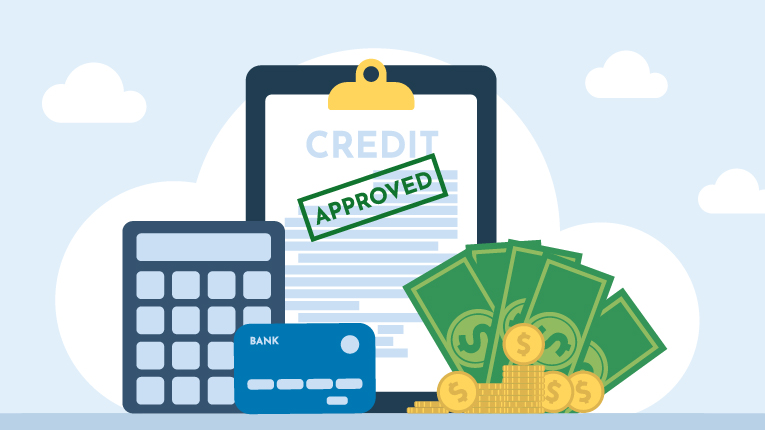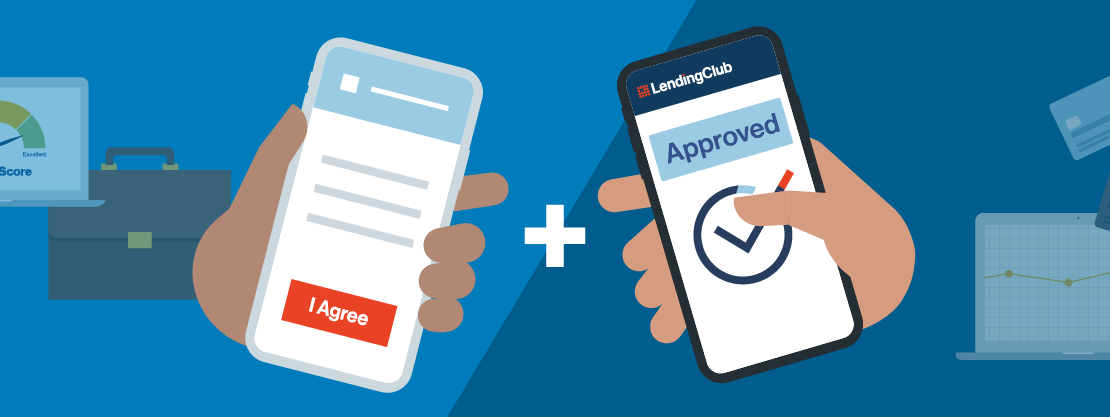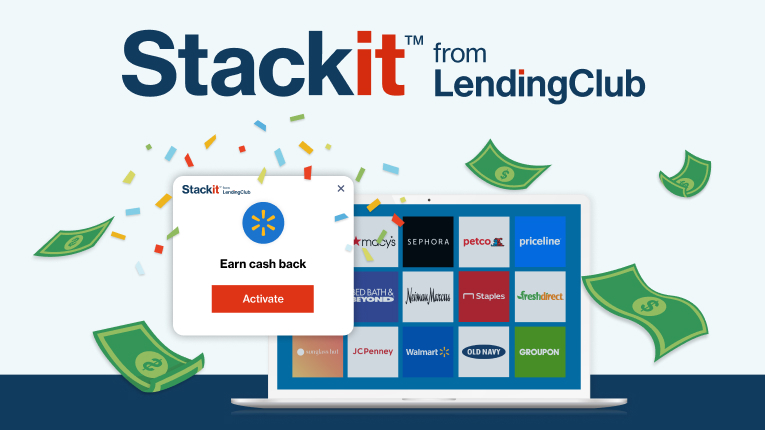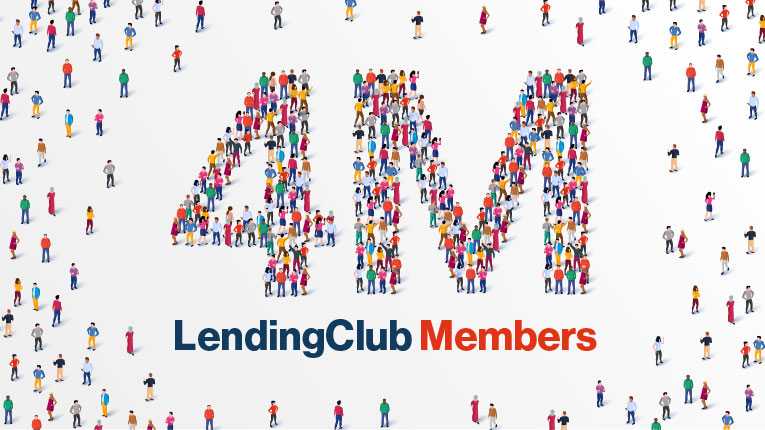11 Signs You Have Too Much Credit Card Debt [+4 Ways to Pay It Off]
![11 Signs You Have Too Much Credit Card Debt [+4 Ways to Pay It Off]](http://images.ctfassets.net/orqped9h4wgz/4PuVwJzPF3xRLRsMMyEvOK/c484ec4062b5d0647c5e5eb99f903169/8.png)
Many Americans must (and regularly do) borrow money to reach important goals, such as attending school, purchasing a car, and buying a home. Even credit cards—when used responsibly—can help us cover ongoing expenses. With that in mind, debt is not only normal, but necessary in many circumstances. But when borrowers take on too much debt, they can dig themselves into a financial hole and feel like there’s no way out.
Quantifying how much debt is “too much” can be a challenge, particularly because personal finance is a subjective topic and debt is no exception. However, there are plenty of warning signs to be aware of—and solutions in the event your debt burden is becoming too much to bear.
In This Article
How Much Debt Is Too Much?
7 Signs You Have a Debt Problem
What To Do If You Have a Debt Problem
How to Manage Your Debt Problem
FAQs
How Much Debt Is Too Much?
Though there isn’t a one-size-fits-all answer when it comes to how much debt you should have, there are a few factors to take into account. For example, a general rule of thumb is if roughly half of your monthly income is committed to debt payments, there’s a good chance you have too much debt.
Your debt-to-income ratio (DTI) is a reliable benchmark for evaluating the health of your personal indebtedness. This metric aggregates your monthly debt payments and divides them by your gross monthly income. For example, let’s assume you pay $1,500 a month for your mortgage, $500 a month to cover credit card debt, and $100 a month for a student loan. If your gross monthly income is $7,000, then your DTI is 30% ($2,100 divided by $7,000).
The lower your debt-to-income ratio the better. But typically, staying below 36% can better your chances of getting approved for a loan with favorable terms. Conversely, research suggests that people with DTIs above 43% are more likely to struggle with monthly payments. That top-line 43% threshold is also important because it’s often the highest ratio lenders will accept. If your loan payments consume half or more of your monthly income, that may be a sign you have too much debt.
As with most money matters, it’s often how you feel that dictates if a circumstance is manageable. So if bills are starting to close in, take an audit of your financial situation and take action early.
11 Signs You May Have a Debt Problem
Taking charge of your debt starts with awareness. Fortunately, there are plenty of signs that you may have a debt problem.
1. You’re juggling bills.
When times are tough financially, paying your bills on time and in full can become a challenge. If you find yourself prioritizing which bills to pay this month, you’re likely missing payments and deepening debt levels.
Missed payments can be detrimental to your credit scores. More importantly, they’re also a sign that your finances are unstable. If you’re living paycheck to paycheck, or if just thinking about paying bills induces anxiety, you could have a debt problem, a budgeting problem, an income problem—or a combination of all three.
2. You spend more than you earn.
An integral component of financial stability and wealth generation is making more money than you spend, which allows you to progress toward your life goals. In that sense, budgeting is useful since it provides an outline of your financial habits and can shed light on how much debt you can handle. But if you’re consistently spending more than you’re earning, or if your credit card bills are routinely high and pushing you beyond your budgetary constraints, that’s a red flag.
3. You’re unable to save.
If you’re relying on borrowing money to get you through each month, it might be time to make a change, and not just because you’re accumulating debt. Not being able to contribute to an emergency fund, put money aside for retirement, or save for long-term goals (e.g., a house, car, childcare) can eventually lead to a financial crisis.
4. You have a low credit score.
High loan balances and delinquent payments can bring down your credit scores, which can adversely impact your chances of qualifying for a good interest rate should you need to borrow money again. If you’ve noticed your credit scores take a slide lately, that’s a telling sign that something is amiss. Learn more about what impacts your credit score.
5. You only make minimum payments.
Just because you pay your credit card bills on time doesn’t mean you’re being financially responsible. If you're only making the minimum payments, you’re paying mostly interest, so your statement balances (and principal amount owed) aren’t decreasing by much each month. Since credit cards tend to carry high interest rates, your amount owed can compound exponentially—even if you don’t use the card to purchase anything going forward.
6. You’re missing loan payments.
Missed payments will not only erode your credit but also put you at risk of defaulting on your loan. In that case, your creditors may be able to seize your personal property, depending on the type of loan. For instance, if you default on an auto loan, your lender might repossess your vehicle.
7. You have a stressful relationship with money.
If you find yourself in a constant state of stress or shame around your debt, or if you feel powerless over money, it’s time to take action. People with bad relationships towards money may feel like their money controls them instead of the other way around, which can lead to poor spending or saving choices.
8. You have a high debt-to-income ratio.
Your debt-to-income ratio (DTI) measures your monthly debt payments against your monthly income. Typically, lenders use this ratio to evaluate your ability to take on more debt. Ideally, your DTI is below 36%. If it’s higher, that’s a potential sign of financial strain.
9. You’ve maxed out credit cards.
Credit cards and other lines of credit have limits—dollar thresholds that you cannot exceed. When you “max out” a card, you’ve essentially drawn down all of your available credit.
Even if you aren’t financially strained from high credit card balances, you may still want to consider cutting back on your credit card usage if you’re maxing them out. That’s because your scores can take a hit if you have a high credit utilization rate, which is the ratio of your total credit balances to your total credit limits. It’s generally recommended to keep your credit utilization ratio below 30%.
10. You’ve covered credit card debt with other credit cards.
Credit cards provide convenience and the chance to accrue benefits like miles, points, and cash back. That said, they can be financially crippling when handled irresponsibly, especially if you continually use new credit cards to pay off old ones, as this can dig you into a deeper financial hole.
11. Your credit card payments are higher than your mortgage.
Houses are typically the most expensive purchase in the average American’s lifetime. Therefore, mortgage payments are usually the largest financial responsibility within a borrower’s mix of debt. So, if your credit card payments exceed your mortgage, you might be overspending.
What You Should Do If You Have a Debt Problem
While even just one of the seven signs above could signal a debt problem, it doesn’t mean there's no way out. Accepting that you’re having difficulty is the first step to achieving a solution. Here are some smart ways to tackle it.
Outline your debts.
Before you can tackle your debt problem, you have to know exactly how much you’re dealing with—now and down the road. Make a list of your debt, including balances, interest rates, minimum payments, and due dates. Calculate how long it will take to pay off each debt if you keep only making the minimum payments.
Find some quick wins.
Look for small balances you can pay off right away. Use micro-actions to help you stick to a budget. Pick up a part-time job or side hustle. Put a change jar by the front door. Doing something that makes you feel like you’re making progress can boost your self-confidence and improve your mood and your outlook. Restoring hope is a powerful thing.
Fix your financial infrastructure.
If you don't have one, now is a good time to create a budget. The first step is drilling down on your income and expenses and plan how you’ll set money aside for an emergency. Once that’s under control, strive for longer-term savings and retirement. Creating a solid financial foundation takes time. Set small, achievable goals and be patient.
Forgive yourself.
Whether the debt levels you accumulated came about due to factors beyond your control or spending habits you’re working to improve, self-compassion and self-care are crucial. Feeling guilty only makes it hard to stay motivated while you try to make things better.
How to Pay Off Credit Card Debt
The average US consumer has a handful of credit cards in their wallet. Although they’re convenient, credit cards can be harmful if used irresponsibly, especially if you max out your balances and rely on cash advances. If you’ve amassed too much credit card debt, you aren’t stuck in a financial hole—you have options.
Test different debt payment methods.
You don’t have to repay debt blindly—two organized methods you can use to pay off debt quickly: the debt snowball method and the debt avalanche method.
With the debt snowball method, borrowers prioritize repaying their smallest debt first (i.e., the lowest loan balances). Although this could lead to higher overall interest costs, the debt snowball helps borrowers build momentum and confidence in their ability to repay debt.
On the other side, debt can be costly—especially if your loans carry high interest rates. If you’d prefer to pay the least amount of interest possible, the debt avalanche method may be more applicable. Under this approach, borrowers prioritize repaying their most expensive loans first, usually determined based on the interest rate. This can minimize total loan costs in the long run.
Try a balance transfer credit card.
Balance transfer credit cards allow borrowers to move their existing credit card debt to a new card. This typically comes with a small fee—in most cases, a set percentage of the total balance getting transferred.
Ideally, this card would have a lower annual percentage rate (APR) on the transferred balance for a promotional period. Since you’d effectively limit or even eliminate your interest accrual during the promotion’s term, you may temporarily solve credit card debt issues.
But keep in mind, once your promotional period ends, your APR could rise significantly, potentially putting you back in a similar spot. For that reason, you may want to consider a balance transfer loan rather than a new card, as this type of loan can provide lower, fixed rates relative to credit cards.
Consider a debt consolidation loan.
With a debt consolidation loan, you can consolidate your debt from multiple credit cards or other high-interest loans into one manageable payment. It can help you save money by reducing your interest rate and, in many cases, make it easier to pay off debt faster. Depending on your credit profile, a debt consolidation loan could help improve your credit by diversifying your credit mix, showing that you can make on-time monthly payments, and reducing your total debt (as long as you’re not adding any new debt).
FAQ
How common is it to be in debt?
Carrying some form of debt is very common. For example, Experian’s State of Credit 2021 report found that the average American has a credit card balance of $5,525, mortgage debt of $229,242, and non-mortgage debt (such as car loans or student loans) totaling $25,112. While debt often carries a negative connotation, it can enable people to reach their financial goals—such as earning a degree or buying a home—if used responsibly.
How much debt should I have relative to my income?
Your debt-to-income ratio (DTI) is a useful metric for assessing your financial health. Lenders see this percentage as an indicator of your ability to take on—and pay off—more debt successfully.
To calculate your DTI, total your monthly debt payments and compare this figure with your gross monthly income. There isn’t a universal ratio that guarantees financial stability—but the lower, the better. Mortgage lenders typically don’t approve applicants with DTIs above 43%, which you can use as a proxy for your personal finances.
How do I fix my debt problems?
The best approach to debt management will depend on your financial situation, credit profile, debt levels, and payoff priorities. Some strategies, like debt avalanche, debt snowball, and debt snowflake methods, may help you tackle debt over time. Whereas in some cases, it may make sense to restructure your debt. For example, you may consider debt consolidation loans, balance transfer loans, and auto refinance loans to reduce the total costs of your debt and alleviate financial stress.
Should I pay off debt during a recession?
Recessions are full of uncertainty, and they can affect everyone’s finances differently. It may be a good idea to pay off debt during a recession, particularly high-rate credit card debt. But before you act, get a clear picture of your overall financial health and job stability. There are circumstances when it’s better to prioritize saving instead of repaying debt.
For guidance on what to consider and how to put a plan into action, learn more about deciding whether to pay off credit card debt during a recession.
How much student debt is too much?
The answer depends on the specifics of your student loan and how much you anticipate earning after school. For instance, a $100,000 loan might be affordable for a med student who expects a sizable income boost once they get their degree—but that wouldn’t necessarily apply to other professions. You can use a student loan payment calculator to gauge how much debt you could reasonably afford relative to the average salaries of your career aspirations.
How much debt is too much to buy a house?
For the typical US consumer, a mortgage is the largest loan they’ll take out in their lifetime. So, if you’re already straddled with other forms of debt—such as student loans, credit card debt, and auto loans—you may want to prioritize paying down your existing balances before you pursue a house. Otherwise, you risk jeopardizing your financial stability.
While debt is subjective by nature, a standard budgeting recommendation is to apply 20% of your income to savings and/or debt. If your potential mortgage payment would prevent you from saving or affording necessary lifestyle purchases, that could be a sign that you’re paying too much for it.
You May Also Like










